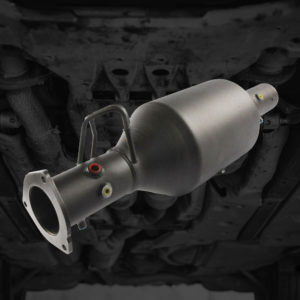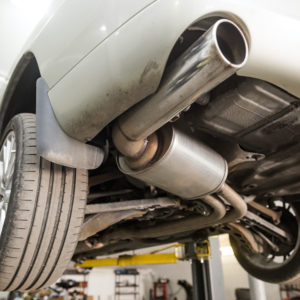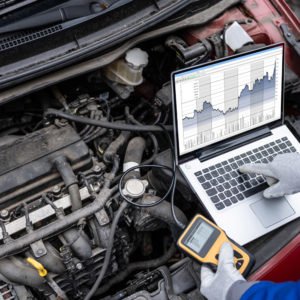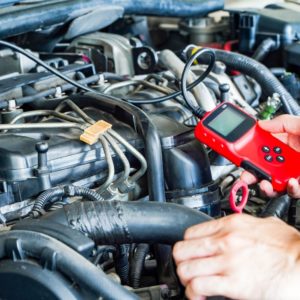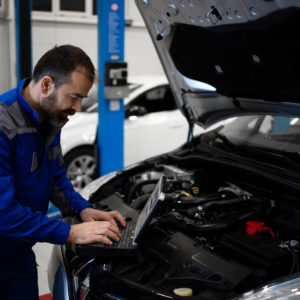Diesel particulate filters (DPFs) are devices designed to eliminate soot emitted by diesel engines. If there are problems with the DPF, the P244B or other related trouble codes can trigger.
What Does the P244B Code Mean?
Diagnostic trouble code (DTC) P244B code is defined as Diesel Particulate Filter Differential Pressure Too High Bank 1. This code triggers when the powertrain control module (PCM) detects the differential pressure across the DPF exceeds the expected value. The pressure difference can be caused by a faulty DPF that’s restricting exhaust flow, but there are other possibilities, as well.

Note: The definition of the P244B code can be different depending on the vehicle manufacturer. Consult the appropriate repair manual or repair database for the exact code definition.
What are the Common Causes of the P244B Code?
The P244B code can be caused by the following problems:
- Insufficient regeneration
- Failed exhaust pressure or temperature sensor
- Faulty diesel particulate filter
- Circuit issues, such as a damaged wire or poor connection
- An issue with the PCM, such as software in need of an update

What are the Common Symptoms of the P244B Code?
The most common symptom of the P244B is an illuminated check engine light.

How to Diagnose the P244B Code
While the definition of the P244B code can indicate a problem with either the DPF or exhaust pressure sensors, this doesn’t mean this is automatically the case. You still need to inspect the concerned components and identify the main cause of this DTC before you conduct any repairs. Otherwise, you might end up fixing a completely functional component.
Accessing and testing those components might require the use of specialized tools and knowledge. If you find this task daunting, don’t hesitate to reach out to a professional mechanic.
Do you want to learn how to diagnose a problem on your own? Watch the video below to get an idea of what the diagnostic process might involve:
How to Fix the P244B Code
The P244B might have a list of common causes, but there is no single way to fix them. Repair procedures vary depending on the vehicle model, design, as well as layout. Sometimes, this trouble code can also trigger several related trouble codes. When this happens, you might need to fix the problems in the appropriate order as dictated by the manufacturer. To learn about possible solutions, consult reputable internet repair resources and how-to guides. When you encounter diagnostic trouble codes, don’t forget to consult your vehicle’s repair manual.
It’s best to consult a professional mechanic if you don’t have much experience diagnosing or correcting error codes.
A Closer Look at the Diesel Particulate Filter
The soot collected by the DPF is typically burned off either passively or actively, as commanded by the PCM. If the DPF is restricting exhaust flow, then it might not be able to burn off the collected soot. Passive DPT regeneration can occur when a vehicle is being driven with sufficient load and exhaust temperatures. This can occur when a vehicle is being driven at highway speeds.
Any information provided on this Website is for informational purposes only and is not intended to replace consultation with a professional mechanic. The accuracy and timeliness of the information may change from the time of publication.



